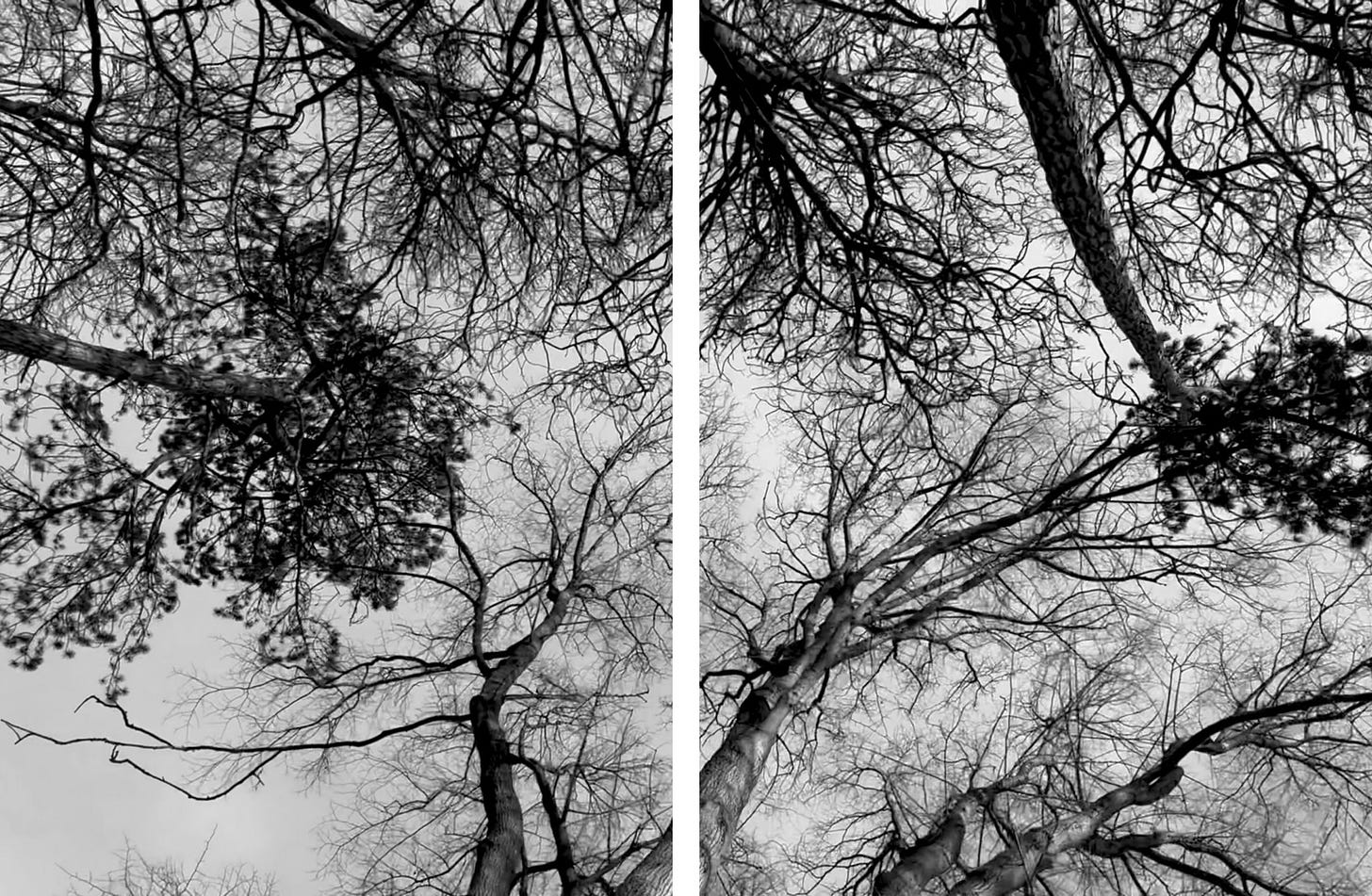One day you notice that something has moved. Not geographically – across a physical space, between determinate places – but a move onwards through time, from one lived moment to another; a distance from one past event in your life to the present that we understand as ‘now’. This realisation visits all of us, but rarely does it sit with us; rarely will it find comfort and stay with any of us for long. Today it lingers and won’t be moved. Nor do I want it gone. This noticing happens as I sit in the chair in the corner of her room, watching the trees sway, pushed by the palm of a mid-Atlantic wind. Five trees, one of them a sycamore, I think, though I’m unable to identify most of the nature I enjoy by name. I’ve never cared for the proprietorial obsessions of this world: it seems not important to know a sycamore from a yew or an oak so long as we can indulge in the splendour of each. Namelessness might perhaps be the kindest proposition for loving and sharing what lives and breathes alongside us in this world right now. Classification is by its nature division: titanium white, ivory black, burnt umber and sienna. The eye should revel in each block of pigment much the same as the water-loaded brush: with equal joy and thirst. So, the chair in the corner, through the window, in front of the sycamore and four other trees when it happens: a moment that connects me to the me of the past, sitting in the window of the previous house, where one towering tree stood in the corner of a dried thatch of dead grass, with a dilapidated shed, dim in its shade. Stillness connects both moments. Here, now; there, back then. A third window, back further to when I was no longer a child, but not yet a man, to the house before, stillness again, leaning into a wall where the plaster is blown above an electric four-bar fire, barefooted on brown linoleum, floor bleached beige where I stand by a flood of cat piss and then the sluice of a Dettol-soaked mop. And through that window, through this same but not same moment, a view through a window to concrete flagstones, concrete posts and concrete steps, wire mesh fence and red brick walls. Pessoa, whose words save me more often than they should, wrote, ‘I look at myself but I’m missing’1. Here I see myself and feel three times more present, intensified by the repeat of a moment lived twice before. Thirty years across three views and still this weight of immense melancholy, and yet now I understand the linking thread so well, can follow the needle and see each stitch mark. She watches me as I stare out of the window, and I resist the temptation to turn round and immediately find her eyes, not wanting to deny her the pleasure of a gaze that has fallen, rested and can now wander over her son. And as she watches, so too do I, through this window, a window that echoes place and time, a re-opening of light and lived moments, where leaf and branch and the leaves and branches of the sycamore and its unnamed sisters move in the wind. Does she see her son, in this moment, or herself reflecting back, because we classify to divide but also to unite that which is most inviolably common. She watches as do these multiple brought-together moments of me. Does she see the carer who helped to feed her lunch, or is she back with the child she once spoon-fed lunch to? Does she notice the fingers spread across his cheek? Does she see the leaf on the lawn before her son, hinged to the grass, lifted and then dropped, lifted and then dropped? Does she see his eyes, not because she finds them mirrored in the window, but because she knows their colour, her colour, her own brown eyes (those blocks of pigment, again, awaiting the joy of water and the brush). Is she connected to somewhere else in time now, too? Back with the shed and the parched lawn, back with the concrete and the mop bucket? Is she back further, watching her children making deckchair-and-bedsheet dens on that back-garden carpet of cherry stones? I turn around to find her gaze, wanting to catch her both smiling and lost in reverie, but she is asleep. And I let the rest of it settle beside her for now too. The cherry tree, the helicoptering winged seeds of the sycamore, a son, his twin and their brother, her children, the calm and the quiet of the world she once classified for herself and then shared with each of us, the life she created and gave names to, the chair we chose for her, the window that looks out onto the green and brown and the windows of years gone and yet still tethered, then, back then, and now, here: now.
‘Friday Fragment’ is an additional weekly instalment to my A Thousand Fragments monthly newsletter.
Fernando Pessoa, ‘O Cat Playing In The Street’ from A Little Larger Than The Entire Universe



Beautiful 🩷
Another delight Matt, thank you